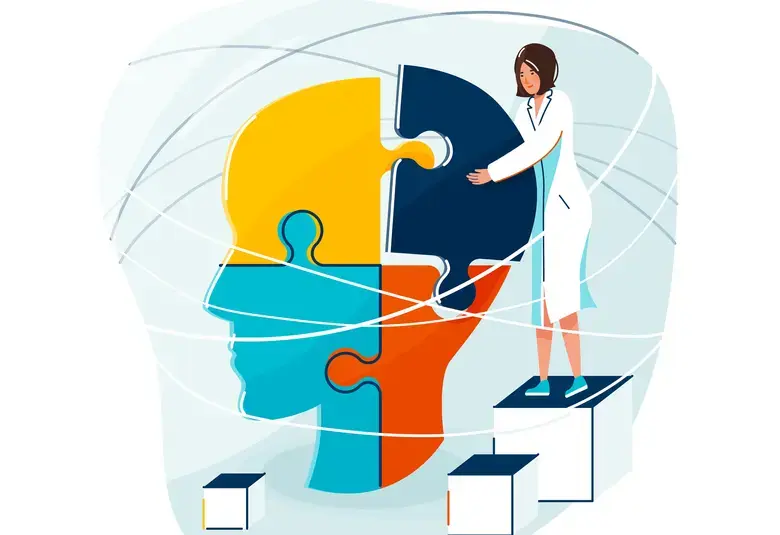On May 5th, 2023, the World Health Organization (WHO) downgraded the COVID-19 pandemic as no longer representing a global public health emergency.1 However, emerging epidemiologic evidence points to persistently elevated risk of some common psychiatric and neurological disorders up to 2 years after COVID-19 infection. During a plenary session titled ‘Neuropsychiatry of COVID-19,’ Dr Paul Harrison, Department of Psychiatry, University of Oxford, England, outlined some of the surprising findings from epidemiologic research that examined trajectories of neuropsychiatric risk in children and adults who became infected with SARS-CoV-2, the virus that causes COVID-19 infection, during the pandemic.
COVID-19 and new-onset mental health disorders
While the pandemic might be officially over, many individuals are still living with complications that affect their brain and mental health. Other coronaviruses have been associated with neurological and psychiatric sequelae, and early in the pandemic, there were reports of new-onset presentations of, sometimes, florid psychiatric disorders in individuals with no previous neuropsychiatric history. Since these appeared to be temporally related to COVID-19 infection, there were concerns of a potential tsunami of post-pandemic mental health problems that would add to an already burdened mental health care system.
There have been concerns about a post-pandemic tsunami of mental health problems
Dr Harrison’s research group used electronic health records and ‘big data’ from about 90 million individuals in the TriNetX Analytics network, which consists of 60 healthcare organizations mainly located in the USA. Incident cases of COVID-19 infection were identified using ICD-10 diagnostic codes, and propensity score matched to individuals diagnosed with other respiratory infections during the same time frame. Several publications stemming from this work have already reported on the associations between COVID-19 infection and subsequent diagnosis of neurological and psychiatric conditions in the following 6 months.2-4 During this plenary session, Dr Harrison offered a 2-year data update, as well as subgroup analyses by different age groups.
There was a 30% increase in common psychiatric and neurological disorders in adults
During the initial 3 to 6 months following COVID-19 infection, there was a 30% increase in common psychiatric and neurological disorders in adults compared to people with influenza or other respiratory infections. Risks were highest in individuals who had been hospitalized for COVID-19 infection, but the elevated risk was observed broadly in the overall population of people with COVID-19 infection. Notably, one in eight individuals with COVID-19 infection had a first diagnosis of neuropsychiatric illness in the 6 months after infection.
1 in 8 individuals with COVID-19 infection had a first diagnosis of neuropsychiatric illness in the 6 months after infection
Trajectories of risk differ in children and adults
In an updated 2-year analysis, the 6-month hazard ratios for many common neurologic and psychiatric disorders were elevated in adults with COVID-19 infection, including anxiety, mood disorders, ‘brain fog,’ dementia, stroke and psychotic disorders. Children were at higher risk of some serious neuropsychiatric disorders, including seizure disorders, cognitive deficits and psychotic disorders, suggesting different etiologies of neuropsychiatric risk by age.
Adults, versus children, have different risk profiles
An important question that Dr Harrison’s group wanted to examine was the persistence of increased risk. Using a time varying analysis, they found that the risk of mood and anxiety disorders was transiently increased in the acute period after infection, but then rapidly fell and returned to baseline levels by Day 43. Dr Harrison posited that early in the pandemic, concerns about isolation, job loss, and death from COVID-19 infection might have triggered mood and anxiety disorders in individuals, who were already susceptible for these mental health conditions.
Acute risk of mood and anxiety disorders rapidly subsides
On the other hand, the risk of psychotic and cognitive disorders rose in the acute period after SARS-CoV-2 infection and fell gradually, but remained elevated up to 2 years after COVID-19 infection, suggesting an underlying biological mechanism may be involved.
Risk of psychosis persists up to 2 years post-COVID-19 infection
Potential mechanisms for persistent neuropsychiatric risk
The simplest explanation for the observed associations between COVID-19 infection and neuropsychiatric disorders involves direct viral infection of the brain and inflammatory reactions secondary to infection. However, autoimmune, microvascular and psychosocial factors could also be involved. An intriguing observation is that individuals taking the mood stabilizer and antiepileptic, phenytoin, were at reduced risk of neurological complications including brain fog. An ongoing study is examining magnetic resonance imaging and other neurobiological markers that may help elucidate the mechanisms between COVID-19 infection and neuropsychiatric outcomes.




